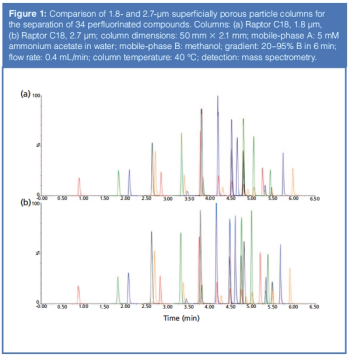
LCGC Asia Pacific
Click the title above to open the LCGC Asia Pacific September 2018 regular issue in an interactive PDF format.

LCGC Asia Pacific
Click the title above to open the LCGC Asia Pacific September 2018 regular issue in an interactive PDF format.

LCGC Asia Pacific
Column-based liquid phase separation techniques, such as liquid chromatography (LC) in reversed phase separation mode and capillary electromigration techniques, using continuous electrolyte systems, are widely used for the identification and quantification of phenolic compounds in plants and food matrices of plant origin. This paper is the first of a two-part review article discussing fundamental and practical aspects of both LC and capillary electromigration techniques used for the analysis of phenolic compounds occurring in plant-derived food and in edible and medicinal plants. The chemical structure and distribution of the major phenolic compounds occurring in the plant kingdom, as well as the main methods used for their extraction and sample preparation, are also discussed. Part 1 will focus on liquid chromatography.

LCGC Asia Pacific
While capillary gas chromatography has been undergoing a renaissance, with new columns, detectors, data systems, and multidimensional separations, the classical inlets have remained the same: We are still injecting liquid samples with syringes into split and splitless inlets, as we have for nearly 50 years. Split and splitless injections present several well-known and some not-so-well known challenges, mostly arising from heating of the inlet, that make sample injection and inlets a major hurdle for gas chromatographers. These challenges and some ideas for mitigating them are discussed and a case is made for renewed exploration of the cool inlets and injection techniques: cool on-column and programmed temperature vaporization.

LCGC Asia Pacific
The use of superficially porous particles (SPPs) for modern high performance liquid chromatography (HPLC) is now very common. Initially, SPPs rose as an alternative to sub-2-µm fully porous particles (FPPs). In recent years, many column manufacturers have developed 2-µm and smaller SPP-based products. This article investigates the practical utility of these smaller SPP designs.

LCGC Asia Pacific
Several new materials and columns have been introduced in recent years for reversed-phase separations of proteins. How do I know which one to choose, and which separation conditions will be best for my protein separation?